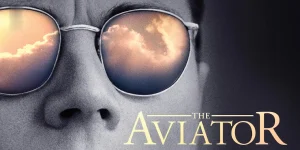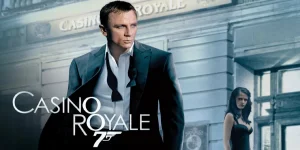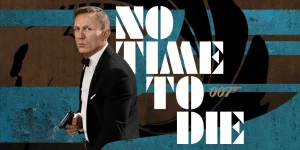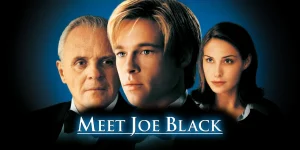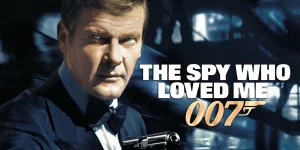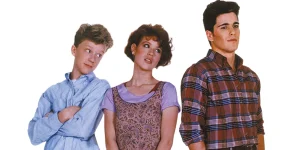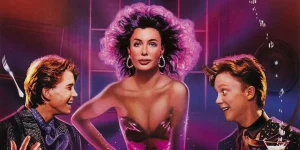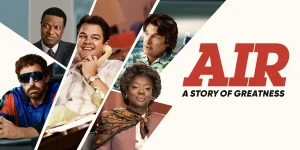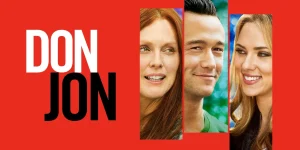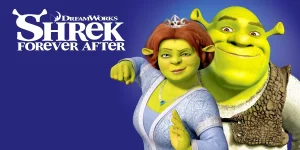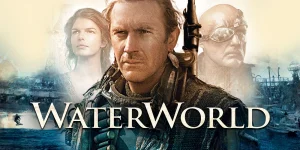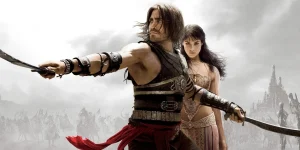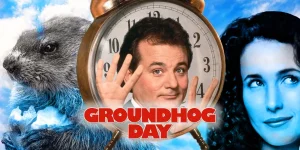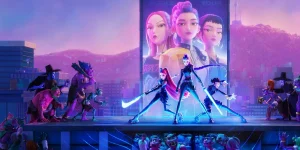The 1967 version of Casino Royale is not your typical James Bond film. Instead of being a straight spy thriller, it’s a wild, comedic spoof packed with absurd gags, multiple Bonds, and a chaotic narrative that defies the usual 007 formula. Directed by a small army of filmmakers (Val Guest, John Huston, Ken Hughes, Joseph McGrath, and Robert Parrish), it’s loosely inspired by Ian Fleming’s first Bond novel but reimagined through the lens of psychedelic 1960s comedy.
Table of Contents
ToggleDetailed Summary
Opening: Sir James Bond Retires
Sir James Bond (David Niven), the “real” Bond in this universe, has long since retired, disgusted with the immorality and recklessness of modern spies. When the heads of the world’s intelligence agencies arrive to request his help against SMERSH, Bond initially refuses. However, when his former flame and fellow agent M (John Huston) is killed in an explosive trap, Bond reluctantly returns to active duty.
The Multiple Bonds Plan
To confuse SMERSH, Bond institutes a plan: all MI6 agents will now use the name “James Bond 007.” This leads to an eclectic cast of Bonds, including Bond’s daughter Mata Bond (Joanna Pettet), seductress Vesper Lynd (Ursula Andress), and American playboy Evelyn Tremble (Peter Sellers).
Recruiting and Training the New 007s
The film shifts between a variety of comedic missions. Mata Bond investigates a spy school in Berlin run by Le Chiffre’s associates. Tremble is recruited to take on Le Chiffre (Orson Welles) at the baccarat table in the titular Casino Royale. Meanwhile, random comedic subplots weave in and out, from Scottish bagpipe assassins to bizarre psychedelic dream sequences.
Le Chiffre’s Plan and Tremble’s Mission
Tremble takes on Le Chiffre in a high-stakes game. In this version, Le Chiffre is both a master criminal and a stage magician who distracts Tremble with card tricks and illusions. Tremble wins the game but is captured. Le Chiffre attempts to extract the winnings through torture, which here is depicted in absurd and comedic ways rather than the brutal tone of the 2006 Casino Royale.
Chaos in the Casino
In the later acts, nearly every character ends up at the casino. SMERSH infiltrates, various “James Bonds” converge, and the plot spirals into a frenetic farce involving cowboys, French Legionnaires, seals, gorillas, and exploding décor.
Movie Ending
In the final sequences, Sir James Bond learns that Vesper Lynd has betrayed them and is actually working for SMERSH. Tremble is killed by a poisoned dart, and chaos breaks loose as a full-scale gunfight erupts in the casino. American agents arrive dressed as cowboys, a French Foreign Legion unit storms in, and animals from a nearby circus join the fray. The fighting becomes so over-the-top that it stops resembling espionage altogether.
A bomb is accidentally detonated, killing nearly everyone—including all the Bonds. Sir James Bond ascends to heaven, where he’s joined by the rest of the cast in a surreal, upbeat ending that plays more like a madcap curtain call than a traditional conclusion. The film closes with angels and heavenly imagery, underlining its absurdist tone.
Are There Post-Credits Scenes?
No. Once the chaotic ending and credit roll are over, there are no additional scenes. The film ends on the heavenly gag, and the credits play without hidden teasers.
Type of Movie
A spy comedy parody and psychedelic farce, with elements of musical numbers, slapstick, and surreal humor. It’s more akin to Austin Powers than to the traditional Bond franchise.
Cast
- David Niven as Sir James Bond
- Peter Sellers as Evelyn Tremble / James Bond 007
- Ursula Andress as Vesper Lynd
- Orson Welles as Le Chiffre
- Woody Allen as Jimmy Bond / Dr. Noah
- Joanna Pettet as Mata Bond
- Deborah Kerr as Agent Mimi
- William Holden, John Huston, Charles Boyer, Jean-Paul Belmondo in cameo and supporting roles
Film Music and Composer
The music was composed by Burt Bacharach, including the famous song “The Look of Love” (performed by Dusty Springfield), which went on to become a pop standard. The soundtrack blends jazzy lounge music with whimsical cues that match the film’s comedic tone.
Filming Locations
- Shepperton Studios, England – Main soundstage work and elaborate casino sets.
- West Berlin, Germany – Exterior shots for Mata Bond’s spy school scenes.
- Paris, France – Additional exteriors.
The locations were chosen partly for visual variety, and partly to satirize the international glamor associated with Bond films.
Awards and Nominations
- Academy Award nomination for Best Original Song (The Look of Love).
- Grammy nominations for the soundtrack album.
- No major wins, but the music remains one of the film’s most enduring legacies.
Behind the Scenes Insights
- Multiple directors worked on different segments because the production was chaotic and plagued by creative disputes.
- Peter Sellers and Orson Welles reportedly refused to be on set together due to personal conflict.
- The original script underwent constant rewrites, leading to a disjointed but unpredictable tone.
- Woody Allen was brought in late in production, and much of his dialogue was improvised.
Inspirations and References
- Based loosely on Ian Fleming’s 1953 novel Casino Royale, though only the card game element and the character Le Chiffre are retained.
- Satirizes Cold War spy films and the early Bond movies produced by Eon Productions.
- Includes absurd nods to silent comedy, slapstick, and surrealist humor of the 1960s.
Alternate Endings and Deleted Scenes
No major alternate ending has been publicly confirmed, but some deleted material includes extended comedic bits with Peter Sellers and additional scenes of Mata Bond’s Berlin mission. Sellers’ departure from production led to abrupt changes in the final act.
Book Adaptations and Differences
The novel is a straightforward espionage thriller where Bond defeats Le Chiffre at cards, survives torture, and suffers tragedy when Vesper betrays him. The 1967 film instead turns it into an ensemble comedy with multiple Bonds, bizarre gags, and a complete departure from the novel’s serious tone.
Memorable Scenes and Quotes
Key Scenes
- Mata Bond infiltrating the bizarre spy school in Berlin.
- Evelyn Tremble’s psychedelic baccarat showdown with Le Chiffre.
- The all-out casino battle with cowboys, circus animals, and chaos.
Iconic Quotes
- Sir James Bond: “You’re not going to get away with this, you know.”
- Jimmy Bond (Woody Allen): “They called Einstein crazy. They called Chaplin crazy. And me, they call me crazy too.”
Easter Eggs and Hidden Details
- Several cameos from big-name actors playing blink-and-you-miss-it roles.
- References to Sean Connery’s Bond films, poking fun at their seriousness.
- Vesper’s name and role as a double agent are the only major holdovers from the original book.
Trivia
- One of the most expensive comedies of the 1960s, with a budget spiraling due to rewrites and production delays.
- Burt Bacharach’s score became more famous than the film itself.
- David Niven was Ian Fleming’s personal choice to play Bond in the serious adaptations.
Why Watch?
If you enjoy absurdist 1960s humor, elaborate visual gags, and a who’s-who of classic film stars, Casino Royale (1967) is a fascinating curiosity. It’s also an intriguing look at how Hollywood tried—and failed—to rival the official Bond films with sheer star power and extravagance.
Director’s Other Movies
- The Mouse That Roared (Val Guest)
- The African Queen (John Huston)
- Chitty Chitty Bang Bang (Ken Hughes)
- A Funny Thing Happened on the Way to the Forum (Joseph McGrath)
Recommended Films for Fans
- What’s New Pussycat? (1965)
- The Pink Panther (1963)
- Austin Powers: International Man of Mystery (1997)
- Our Man Flint (1966)



